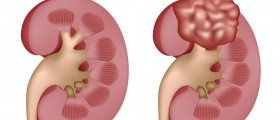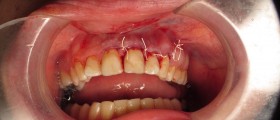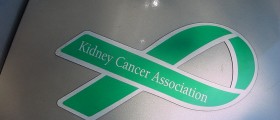
What are kidney cysts?
Kidney cysts are non-malignant growths — fluid-filled sacs — that can form in the kidneys or on the outer surface. Kidney cysts can be either simple or complex in nature. Simple kidney cysts are much more common, they rarely cause complications, and they often don't even need to be treated. Complex cysts, on the other hand, have certain characteristics that increase the chance of kidney cancer.
In most cases, simple kidney cysts are round and filled with liquid. The fluid is clear and usually yellowish, and the lining of the cyst is smooth, with no irregularities. Simple kidney cysts are most often harmless and fairly common, especially among older people over the age of 50.
Another common type of simple kidney cysts is a hyperdense cyst, which contains blood in the lining of the cyst. Just like the regular simple kidney cyst, a hyperdense cyst does not increase the risk of kidney cancer.
Complex kidney cysts are different and they are considered to be more serious. These kidney cysts are characterized by an irregular outer shape and by certain irregularities inside the cysts. For example, these cysts can have septations (or walls within the cysts), which can be thin or quite thick and coarse.
Another type of complex kidney cysts are the calcified ones. Calcification means that there are calcium deposits inside the cyst, making the cyst solid rather than filled with fluid. These deposits can be very subtle or quite big and well-defined.
When it comes to the risk of cancer associated with complex kidney cysts with calcification, it is important to realize that there is a chance of malignancy. The risk varies from person to person — in some people, the risk of cancer will be very low, while in others it is considerable. This is why it is very important to monitor the cysts and to have regular check-ups with a urologist or a radiologist to see if the cysts underwent any changes.
Treatment for kidney cysts
In the majority of cases, simple kidney cysts do not cause any symptoms and are only discovered on X-ray exams performed for other reasons, for example for kidney stones. In such cases, no specific treatment is necessary but the patient is advised to have regular check-ups in case the cyst changes or grows bigger or undergoes other changes.
Sometimes simple renal cysts do cause some symptoms, usually discomfort, tenderness or pain in the flank. In other cases, simple kidney cysts may grow so large that they begin causing symptoms, or they may become infected or burst.
If the symptoms are interfering with the normal activities of the patient or an infection is present, they can be removed through aspiration and sclerosis. Aspiration means that the doctor inserts a needle through the skin into the cyst, guided by ultrasound or CT scan, and drains the fluid from the cyst. Sclerosis is then performed by injecting a substance that reduces the empty cyst to a scar.
In some cases, laparoscopic decortication of the cyst may be required. This minimally invasive surgical procedure is usually done when aspiration or sclerosis fail to eliminate the cyst or if the cyst keeps growing back. It is carried out under general anesthesia.

















Your thoughts on this
Loading...